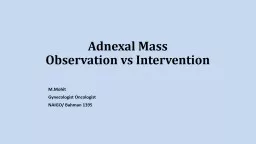PPT-به نام خداوند دادار پاک
Author : stefany-barnette | Published Date : 2020-04-10
پدیدآور آدم از آب و خاک Otologic Manifestations of Systemic Disease 1 granulomatous and infectious diseases neoplasms disorders of bone
Presentation Embed Code
Download Presentation
Download Presentation The PPT/PDF document " به نام خداوند دادار پ..." is the property of its rightful owner. Permission is granted to download and print the materials on this website for personal, non-commercial use only, and to display it on your personal computer provided you do not modify the materials and that you retain all copyright notices contained in the materials. By downloading content from our website, you accept the terms of this agreement.
به نام خداوند دادار پاک : Transcript
Download Rules Of Document
" به نام خداوند دادار پاک "The content belongs to its owner. You may download and print it for personal use, without modification, and keep all copyright notices. By downloading, you agree to these terms.
Related Documents














